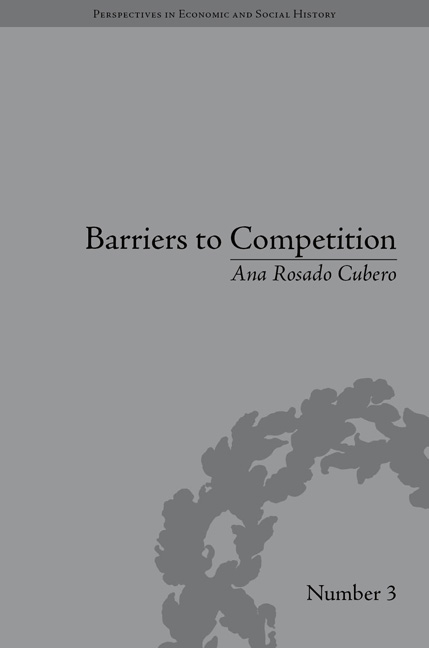Book contents
- Frontmatter
- CONTENTS
- Dedication
- Acknowledgements
- Introduction
- 1 Imperfect Competition in Economic Theory Before 1956
- 2 Barriers to Entry: the Late 1950s and the 1960s
- 3 The Harvard and Chicago Schools: Two Ways of Studying Barriers to Entry
- 4 Barriers to Entry in the 1970s
- 5 Barriers to Entry in the 1980s
- 6 Barriers to Entry: Current Analysis
- Conclusion
- Appendix: Tables
- Notes
- Works Cited
- Index
2 - Barriers to Entry: the Late 1950s and the 1960s
- Frontmatter
- CONTENTS
- Dedication
- Acknowledgements
- Introduction
- 1 Imperfect Competition in Economic Theory Before 1956
- 2 Barriers to Entry: the Late 1950s and the 1960s
- 3 The Harvard and Chicago Schools: Two Ways of Studying Barriers to Entry
- 4 Barriers to Entry in the 1970s
- 5 Barriers to Entry in the 1980s
- 6 Barriers to Entry: Current Analysis
- Conclusion
- Appendix: Tables
- Notes
- Works Cited
- Index
Summary
Introduction
In the last chapter we mentioned economic scholars’ main difficulties in building a framework to demonstrate how imperfect competition works. In the present chapter we shall present the birth of the economic idea known as ‘barriers to entry’ and discuss how this new proposal is capable of demonstrating that markets usually don't work in a perfect competitive way. This chapter is about the Bain-Sylos-Modigliani theoretical model, and the empirical demonstration of their theories during the 1960s. We will begin with a brief biography of both, following with a description of the contribution of each to the formal model. The next section refers to the difference between the theory in the real world and how they included personal contributions. The chapter concludes with an argument about cross-section data and its limits in demonstrating the existence of barriers to entry. At the same time, the concept and the theoretical economic framework got a good reception in the American antitrust policy which inspired the creation of merger Guidelines in 1968.
The economic theory offers two definitions of barriers to entry, one was written by Joe Bain and the other one was written twelve years later by George Stigler. Bain wrote in 1956:
Let us understand the term ‘condition of entry’ to an industry to mean something equivalent to the ‘state of potential competition’ from possible new sellers. Let us view it moreover as evaluated roughly by the advantages of established sellers in an industry over potential entrant sellers, these advantages being reflected in the extent to which established sellers can persistently raise their prices above a competitive level without attracting new firms to enter the industry.
- Type
- Chapter
- Information
- Barriers to CompetitionThe Evolution of the Debate, pp. 47 - 64Publisher: Pickering & ChattoFirst published in: 2014



